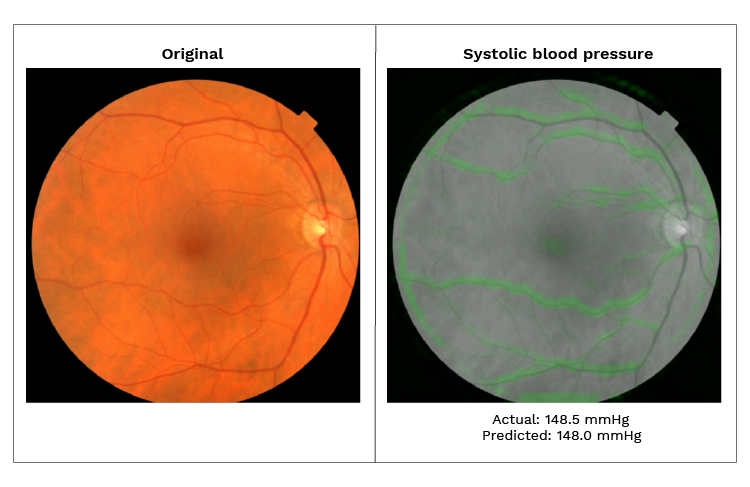Eyes: a window into heart health
Eyes: a window into heart health
As a preventive cardiologist and researcher, I think a lot about how best to identify increased risk for heart disease among the patients I treat. As the Head of Cardiovascular Health Innovations at Verily, I’m fortunate to be able to work with a cross-disciplinary team – both at Verily and within the Google AI team – to explore exciting new ways to identify signals of this disease with machine learning. Published today in Nature Biomedical Engineering, “Predicting Cardiovascular Risk Factors from Retinal Fundus Photographs via Deep Learning,” led by Google researchers, shows promising findings on the application of machine learning in identifying risk markers through non-invasive means.
Cardiovascular disease is the leading cause of death globally and there’s a strong body of research that helps us understand what puts people at risk: daily behaviors including exercise and diet in combination with genetic factors, age, ethnicity, and biological sex all contribute. However, we don’t precisely know in a particular individual how these factors add up, so in some patients we may perform sophisticated tests, like coronary calcium CT scans, to help better stratify an individual’s risk for having a cardiovascular event such as a heart attack or stroke. This paper demonstrates that deep learning applied to a retinal fundus image, a photograph that includes the blood vessels of the eye, can frequently predict these risk factors – from smoking status to blood pressure – as well as predict the occurrence of a future major cardiovascular event on par with current measures.
One of the exciting aspects of this study is the generation of “attention maps” to show which aspects of the retina contributed most to the algorithm, thus providing a window into the “black box” often associated with machine learning. This can give clinicians greater confidence in the algorithm, and potentially provide new insights into retinal features not previously associated with cardiovascular risk factors or future risk.

On the left: a sample retinal image from the dataset in color. On the right: attention map indicating areas that support the prediction for high systolic blood pressure in green, which overlap with the retinal blood vessels.
The prospect of machine learning applications in screening for risk or the presence of disease, as we’ve shown in diabetic retinopathy, suggests an exciting new frontier in healthcare. Machine learning allows researchers to surface signals in data-rich environments, like images, that were previously difficult to examine given their complexity and enables broader, deeper scientific discovery. The opportunity to one day readily understand the health of a patient’s blood vessels, key to cardiovascular health, with a simple retinal image could lower the barrier to engage in critical conversations on preventive measures to protect against a cardiovascular event. This is promising, but early research – more work must be done to develop and validate these findings on larger patient cohorts before this can arrive in a clinical setting.
At Verily, our focus has been on understanding the transition from health to disease across a range of conditions, and machine learning is one of the tools that enables this discovery. We continue to collaborate with different organizations on the early detection of risk and disease, from Google AI on this work, to the American Heart Association on the One Brave Idea Initiative, to Duke and Stanford for the Project Baseline Study. Discovering strong predictive technologies will enable the preventive approach to healthcare that is core to our mission.
Posted by Michael V. McConnell, MD, MSEE, Head of Cardiovascular Health Innovations, Verily